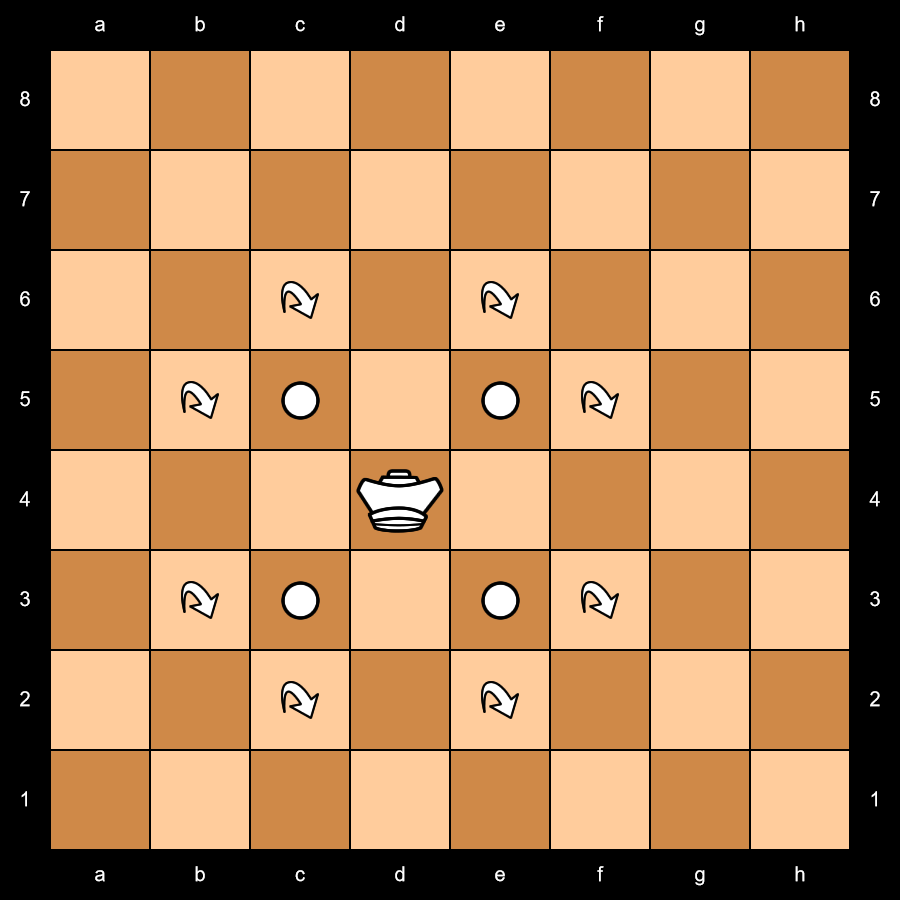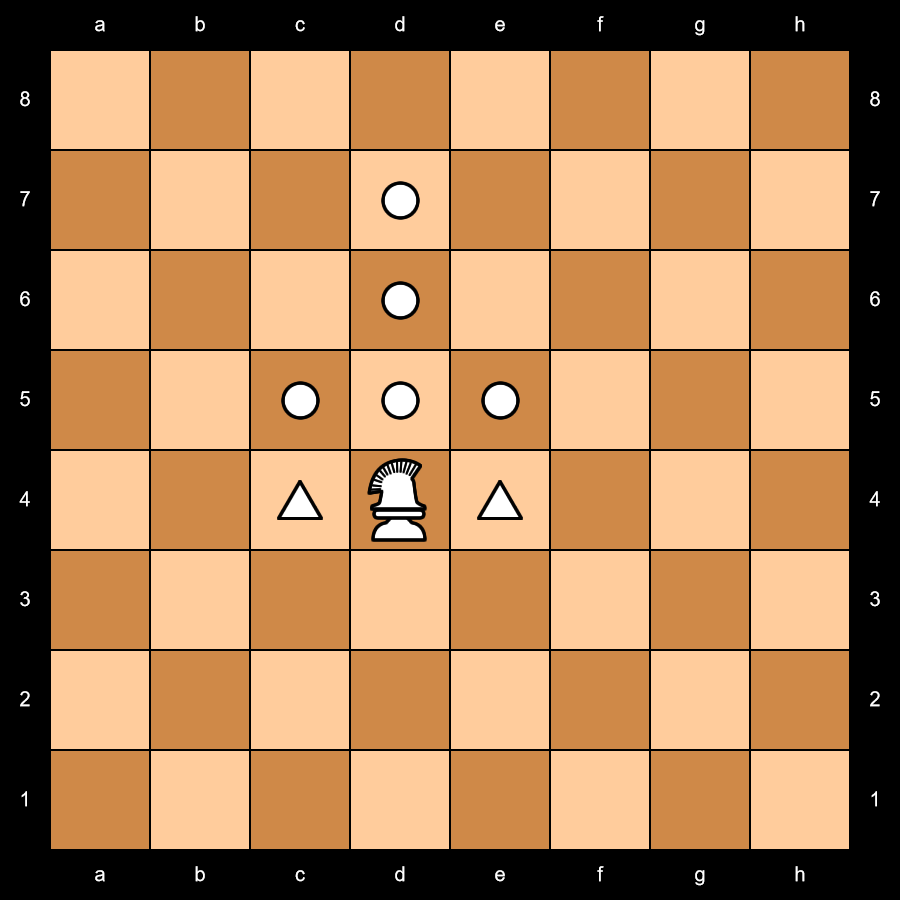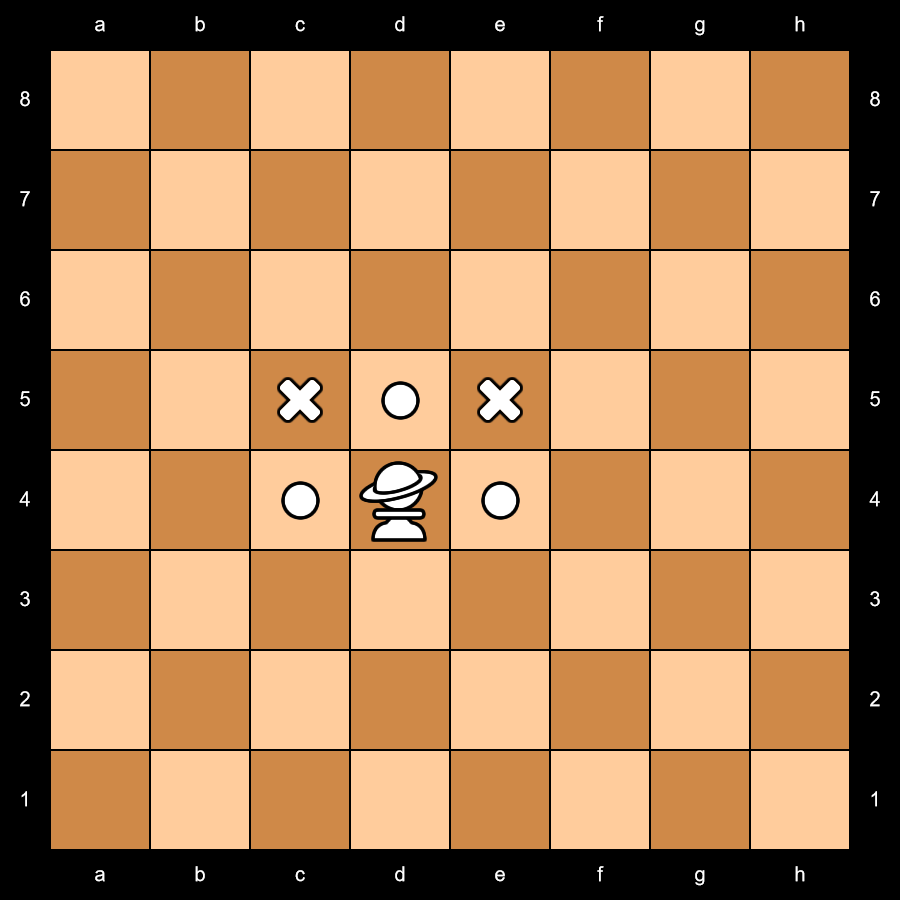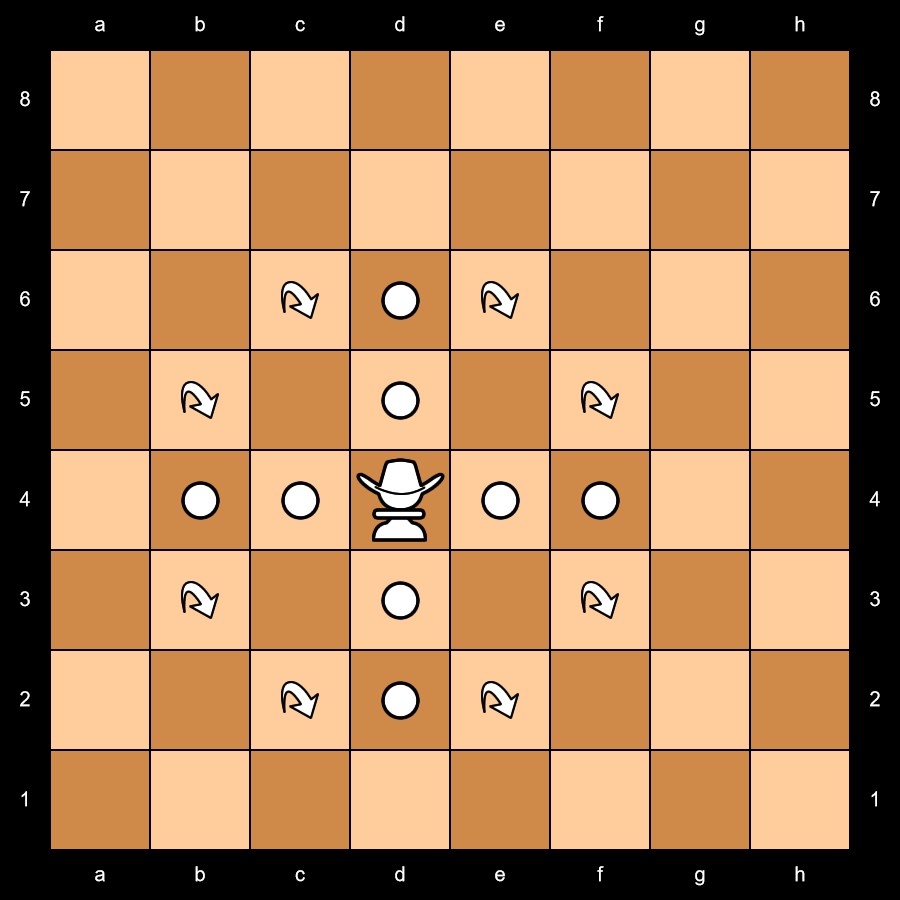Vanguard Chess
Vanguard Chess is a new variant played on a double-size board (actually the equivalent of four standard boards), with three rows of pieces on each side to open. These include several types of fairy pieces, as described herein.
Setup
As stated above, this game uses all the same pieces as standard Chess, plus several fairy pieces, on a 16x16 board.
The back row's setup for White is:
- Tank, Nightrider, Falconer, Spy, Bishop, Wizard, Princess, Queen, King, Prince, Chancellor, Bishop, Spy, Falconer, Nightrider, Tank
Black sets up the back row in reverse order.
Both sides set up the second and third row identically:
- Rook, Knight, Lancer, Lioneer, Archer, Archer, Archer, General, General, Archer, Archer, Archer, Lioneer, Lancer, Knight, Rook
- Pawn, Pawn, Pawn, Pawn, Soldier, Soldier, Soldier, Sergeant, Sergeant, Soldier, Soldier, Soldier, Pawn, Pawn, Pawn, Pawn

Pieces
The pieces from standard Chess all move as in that game, with the exception of the Pawn (see below), and the exclusion of Castling. The other pieces, in alphabetical order (along with their alphabetical symbols and the number for each player):
 Archer (A; 6)
Archer (A; 6)
The Archer moves 1 or 2 spaces diagonally. It can jump the first space if it's capturing in the second.
Bishop (B; 2)
As in standard Chess, can move diagonally any distance.
 Chancellor (C; 1)
Chancellor (C; 1)
The Chancellor combines the moves of the Rook and Knight.
 Falconer (F; 2)
Falconer (F; 2)
The Falconer moves up to 3 spaces diagonally, and can turn. Put another way, it can move to any space of the same color within a 7x7 square centered where it starts, as long as it can go there unimpeded with diagonal moves.
 General (G; 2)
General (G; 2)
The General moves diagonally like a Bishop, or orthogonally on every other space. Note that, while this makes the General color-locked, it doesn't jump the spaces of the other color when moving orthogonally; those spaces must be open.
King (K; 1)
As in standard Chess, can move one space in any direction. If threatened (in Check), the King must move to an unthreatened space; if that is not possible; it's considered to be in Checkmate.
If the Prince is on the board, the opponent must capture the King on the next move, and the player's Prince is then promoted to King; however, there may be ways (see below) to save the King. If the Prince is not on the board, the opponent wins.
Also, Castling is not used.
Knight (N; 2)
As in standard Chess, jumps two spaces orthogonally, then turns 90 degress and moves one space. Only the target space needs to be open.
 Lancer (L; 2)
Lancer (L; 2)
The Lancer jumps two squares diagonally, then two spaces orthogonally (or vice versa; it amounts to the same thing). Basically, it's twice the move of a Knight.
 Lioneer (Li; 2)
Lioneer (Li; 2)
The Lioneer moves like a King, but can move twice in one turn, enabling it to (potentially) capture two enemy pieces at once. Put another way, it can move one or two spaces in any direction, including Knight-like (but without jumping), and can capture in the intervening space as well as where it lands. It can also capture a piece in a neighboring space, and then return to its original space. (If you prefer, this may also be called the Lion Tamer, or just Lion.)
 Nightrider (Nr; 2)
Nightrider (Nr; 2)
The Nightrider moves like a Knight, but can continue to move in a straight line as long as the landing spaces are open.
Pawn (P; 8)
The Pawn moves as in standard Chess, except that its opening move may be up to 4 spaces, and En Passant is not used.
Upon reaching the far row, the Pawn promotes to Knight.
 Prince (Pr; 1)
Prince (Pr; 1)
The Prince can move one space diagonally, or like a Knight. A Royal piece, the Prince as well as the King must be captured for victory. If the King is captured while the Prince is on the board, the Prince becomes the King.
 Princess (Ps; 1)
Princess (Ps; 1)
The Princess combines the moves of the Bishop and Knight. If the Queen is captured while the Princess is on the board, the Princess becomes Queen.
Queen (Q; 1)
As in standard Chess, combines the moves of the Bishop and Rook.
Rook (R; 2)
As in standard Chess, can move orthogonally any direction. Also, Castling is not used.
 Sergeant (Sg; 2)
Sergeant (Sg; 2)
The Sergeant can move or capture 1-3 spaces forward, or one square diagonally; it can also move, but not capture, one square sideways.
Upon reaching the far row, the Sergeant promotes to Lancer.
 Soldier (Sl; 6)
Soldier (Sl; 6)
The Soldier moves like a Pawn (including moving up to 4 spaces on the opening move), but can also move (but not capture) one square sideways.
Upon reaching the far row, the Soldier promotes to Tank.
 Spy (Sp; 2)
Spy (Sp; 2)
The Spy can move one or two spaces orthogonally, or jump like a Knight.
 Tank (T; 2)
Tank (T; 2)
The Tank moves like a Rook, but can jump over the first square.
Wizard (W; 1)
The Wizard moves one space diagonally, and then may continue 1-2 spaces orthogonally outward.
Rules
The basic rules of Chess are followed, with a few exceptions to allow for the larger board and larger armies (all noted above, but reiterated here):
- Castling and En Passant are not used.
- Both the King and the Prince must be captured for victory. If the King is captured first, then the Prince becomes King. The game ends when the King is in Checkmate, without a Prince on the board; or if the opponent can get both the King and the Prince in Checkmate simultaneously.
- If the Queen is captured and the Princess is still on the board, the Princess becomes Queen.
- Pawn pieces promote upon reaches the far row as follows: Pawns become Knights, Soldiers become Tanks, and Sergeants become Lancers.
Checkmate
As noted above, if the King is in Checkmate while the player's Prince is on the board, the opponent must capture the King on the next move, and the Prince is then immediately promoted to King. However, since the player's own next move can be anything, the King can be Rescued if the player can put the opponent's King in Check (but not Checkmate). In the case, the opponent must address the Check before capturing the King (with one exception, below). If the player can force a move that lets him take the King out of Checkmate (and then out of Check), then the King is Rescued.
A "Double Checkmate" can occur if both the King and Prince can be locked into Checkmate. Given the Prince's moves, this would be extremely rare, but it can happen.
If a player can achieve Double Checkmate and his own Prince is on the board, then he need not get his own King out of Check.
Options
The following optional rules may be implemented, if both players agree before the match starts:
- Prince/Princess and/or Chancellor/Wizard may reverse their positions on both sides.
- If the King is captured and the Prince is promoted to King, the Princess is also promoted to Queen.
Notes
This Variant is inspired somewhat by the Chess on a Really Big Board variant (scroll down to "Two Sets, Four Boards," or see the Wikipedia article), which also uses fairy pieces on a 16x16 board. There are also influences of certain other variants that use a large board with multiple starting rows, though as far as I'm aware this is the only one with three rows.
Given the large board size, large number of pieces, and presence of two Royal pieces (King and Prince), this game takes somewhat longer to play than standard Chess.
Also, I'm aware that some of the symbols used here are not the "standard" symbols that most are used to, for the pieces that are used in other games. I apologize for that; if there's too much confusion, I'll change them.
Getting the Pieces
If you have a 3D printer and a decent amount of time, Thingiverse user Francois Houdebert has (as of this writing) all of the needed pieces for this game.
- The conventional pieces, and some of the fairy pieces, can be extracted from the Fairy Chess Set; the Arrow (Archer), Chancellor, Lion (Lioneer), Machine (Tank), Prince, and Soldier should be fairly obvious.
- The Falcon (Falconer), Lancer, Spy, and Wizard are also usable as-is (the Spy is grouped with the Wizard).
- Use the Amazon (the main one, not "amazon-crown") for the General.
- Use the Centaur for the Nightrider.
- Use the Duchess with the dress for the Princess.
(Some adjustment of the piece sizes may be needed.)
 This 'user submitted' page is a collaboration between the posting user and the Chess Variant Pages. Registered contributors to the Chess Variant Pages have the ability to post their own works, subject to review and editing by the Chess Variant Pages Editorial Staff.
This 'user submitted' page is a collaboration between the posting user and the Chess Variant Pages. Registered contributors to the Chess Variant Pages have the ability to post their own works, subject to review and editing by the Chess Variant Pages Editorial Staff.
By Bob Greenwade.
Last revised by Bob Greenwade.
Web page created: 2023-05-30. Web page last updated: 2023-08-06